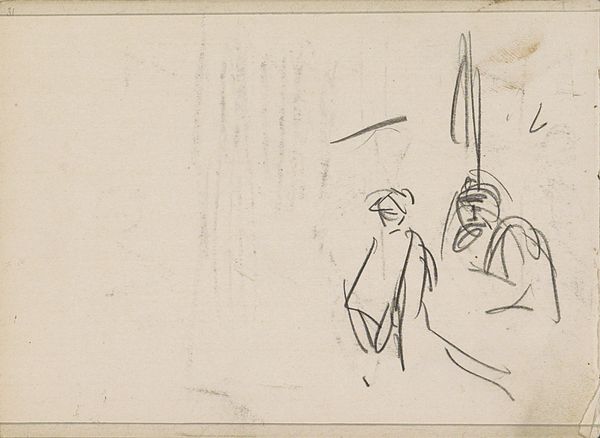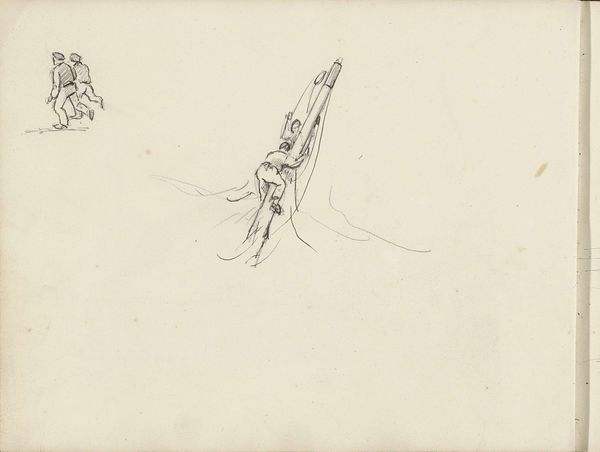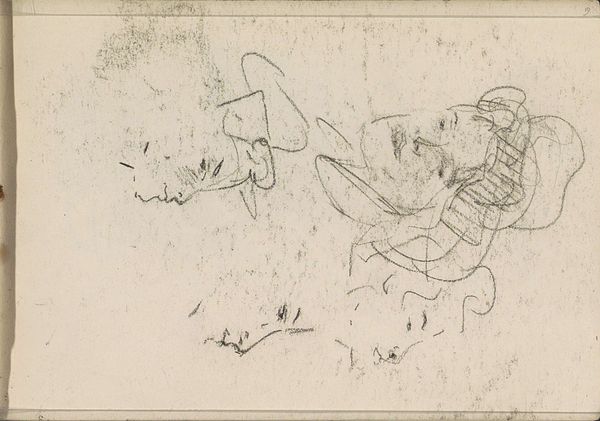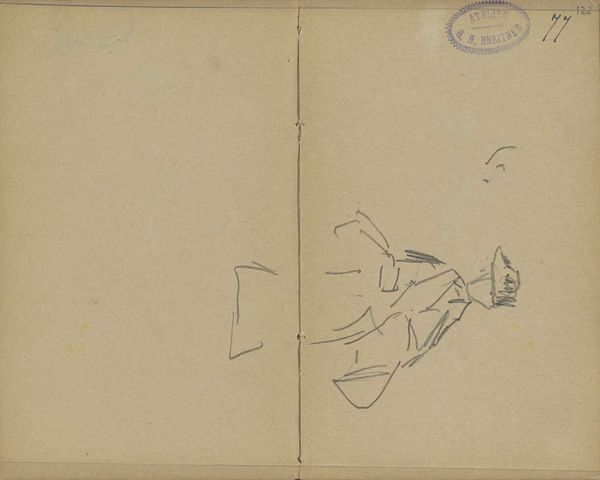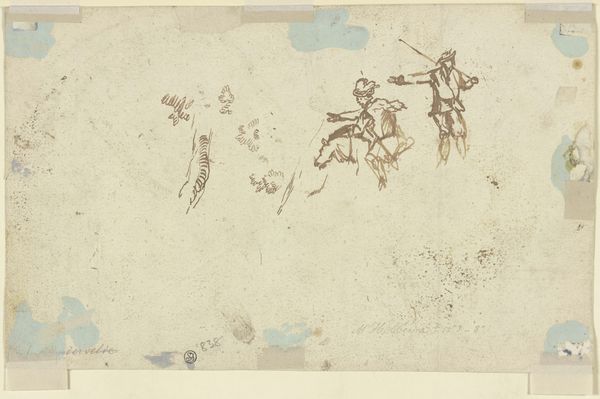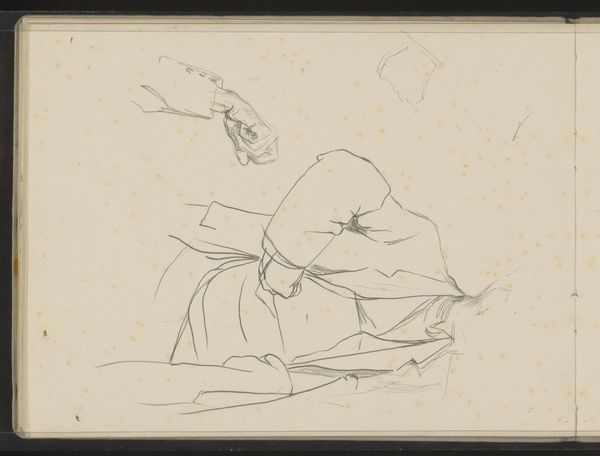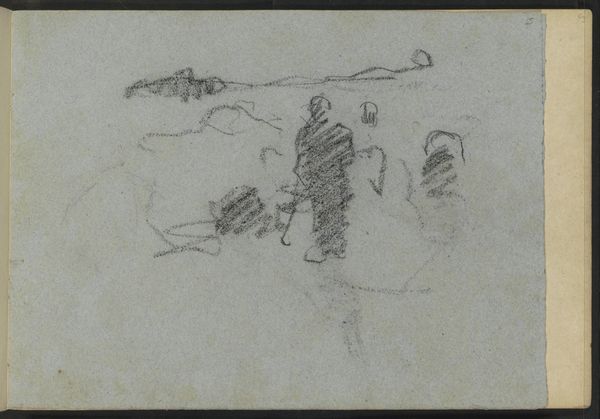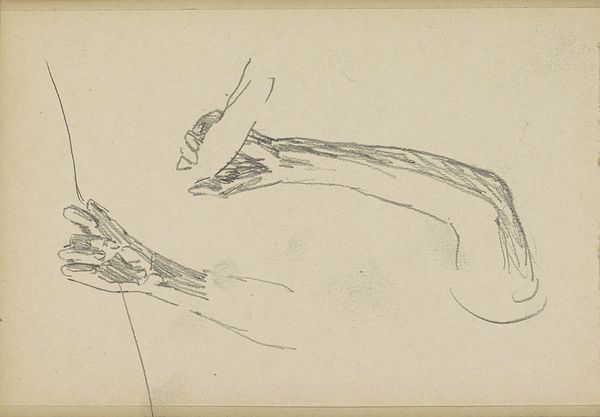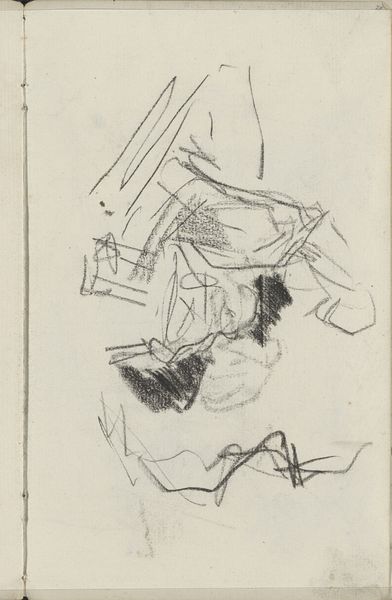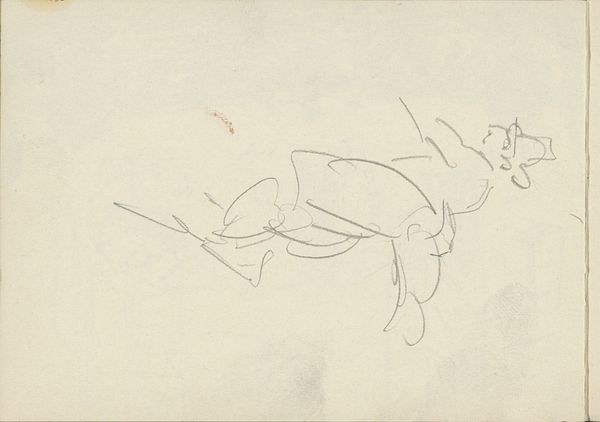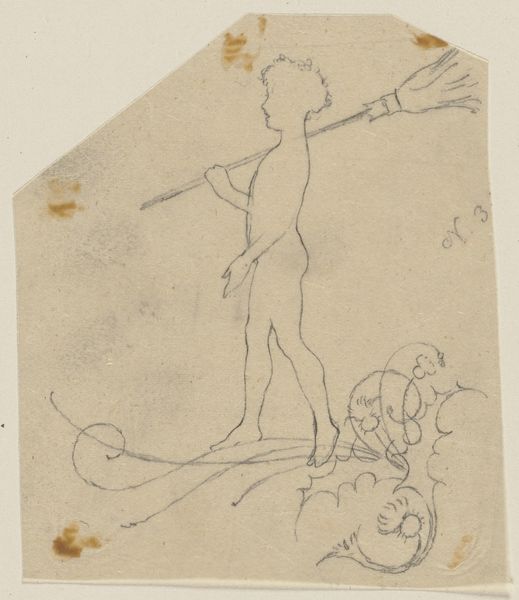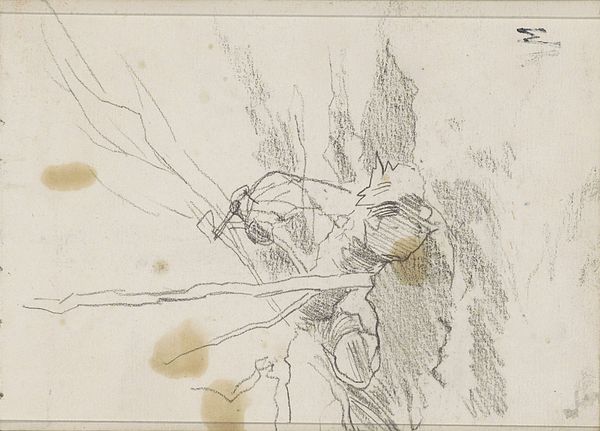
drawing, paper, pencil
#
portrait
#
drawing
#
impressionism
#
figuration
#
paper
#
pencil
Copyright: Rijks Museum: Open Domain
Curator: Here we have a drawing by George Hendrik Breitner, titled "Figuurstudie, mogelijk van een staande vrouw," created sometime between 1881 and 1883. It's a pencil sketch on paper, currently residing here at the Rijksmuseum. Editor: The sketch possesses an incredible dynamism despite its spare lines. The figure is suggested rather than fully defined, giving it an almost ethereal quality. It conveys a sense of fleeting movement, as if we've caught the subject at a passing moment. Curator: Breitner, deeply immersed in impressionism, often used drawings like these to capture the immediacy of urban life. The dress and hairstyle certainly suggest the era. One might consider the figure’s pose as a potential clue into how women of the time carried themselves. Editor: Absolutely. It's interesting to consider the subject's pose and its potential political underpinnings. The clothing could imply restrictions of class and gender. Does this positioning denote submission or resilience? Curator: Or perhaps it speaks to the constant surveillance faced by women navigating public spaces during this time. The city wasn’t necessarily a welcoming or safe space for a woman alone. Breitner’s focus on working-class subjects brought their realities into the artistic consciousness. Editor: Indeed. This piece exists beyond its aesthetic surface; the sketch invokes more significant social considerations. In what way was this form of female depiction a conscious act of recording what it meant to occupy urban space, to exist within a gaze that would frequently pass judgement? Curator: I agree entirely. It is also very possible to examine these types of sketches by Breitner through the lens of Dutch tradition, but filtered and influenced through French impressionism of artists like Manet and Degas. Editor: So, what started as what may have appeared as merely an incomplete work—a practice study on paper—turns out to evoke larger themes about existence, labor, and observation that echo strongly today. Curator: That's the power of art—to capture moments in time and preserve them in ways that provoke endless questions. Editor: A valuable moment of reflection, captured by Breitner’s astute pencil.
Comments
No comments
Be the first to comment and join the conversation on the ultimate creative platform.
